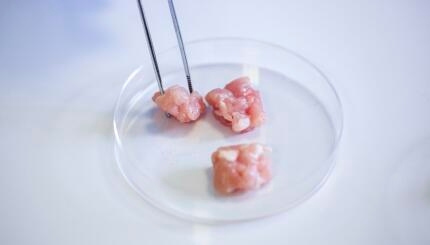Many people consider an observant Jew to be someone who keeps the laws of Shabbat and eats only kosher food. But there are actually a wide variety of ways that one can observe these commandments.
In terms of keeping kosher, it helps to be knowledgeable about the various levels of this practice found in different segments of the Jewish community. This can help you decide what kosher practices you want to observe and also help you communicate better with others about how to eat together. If you’re invited to a meal in someone else’s home, it’s always best to ask before making any assumptions about their kosher practices. And when you’re inviting someone else to your home for a meal, it’s entirely appropriate to be upfront and specific about how you keep kosher, so that your guests are able to decide for themselves if they’re comfortable eating at your house.
According to Jewish law, the three basic elements of keeping kosher are:
- Avoiding any non-kosher animals (fish that don’t have fins and scales, land animals that do not both chew their cud and have cleft hooves, most birds);
- Avoiding eating meat and dairy together;
- Only eating meat that was slaughtered in a certain way, and drained of blood. Within these general guidelines, here are some of the main areas of diverse interpretation:
Kosher Symbols
In North America, many food products are marked with symbols that indicate they have been certified as kosher by various rabbinic institutions.
With your help, My Jewish Learning can provide endless opportunities for learning, connection and discovery.
READ: How to Decode the Different Kosher Symbols
Some people purchase only products with such a symbol. Others are even more stringent and purchase only products with specific symbols that they deem more trustworthy. Still others will eat products without kosher symbols, after studying the ingredients listed and determining that the product contains only kosher ingredients. Produce generally does not require a symbol, unless it is packaged or processed in some way.
The Cheese Question

A vital ingredient in hard cheeses is an enzyme called rennet, which is normally derived from the stomachs of an animal. Some rabbinic authorities, including most from the Conservative movement, maintain that the enzyme is so separated from its original source, that it cannot be considered a meat product. Therefore, these authorities believe it is permissible to eat cheese that was made with rennet. Others believe that rennet still constitutes a part of an animal, and thus cannot be mixed with milk, and would theoretically have to come from a kosher animal. Those who maintain this position will not eat cheese made with animal rennet. In America, all cheeses that have kosher supervision are made with kosher rennet, which comes from vegetable or microbial sources.
Halav Yisrael (Cholov Yisroel)
In the past, some farmers were known to mix milk from non-kosher animals, such as horses and camels, in with the milk of kosher animals, such as cows and goats. This milk would not be considered kosher because it contained products of non-kosher animals. As a result, the custom of drinking only milk produced by Jewish farmers came about, so as to ensure that the milk one received was unquestionably kosher. This practice is called Halav Yisrael, or Cholov Yisroel, which means Jewish milk.
Restaurants
Many people have different rules for what they will eat in their home, and what they eat outside their home. So, they may purchase only ingredients with rabbinic supervision for use in their home, but eat in restaurants that do not have rabbinic supervision. This practice is not based in Jewish law, but more in a desire to maintain traditions in the home.
kosher
Pronounced: KOH-sher, Origin: Hebrew, adhering to kashrut, the traditional Jewish dietary laws.


